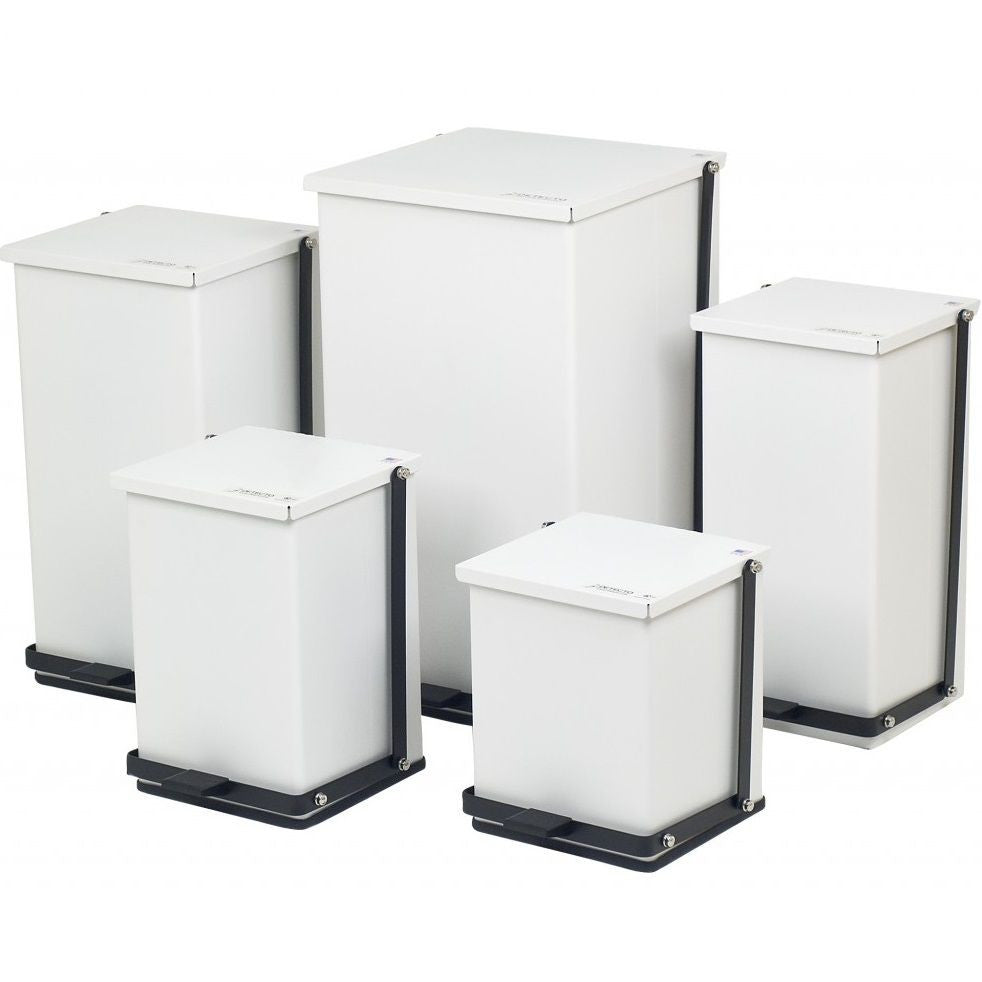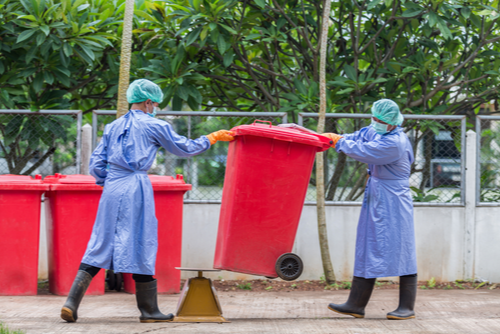Medical Waste Removal Proficiency: Where Service Excellence Satisfies Health Requirements
Medical Waste Removal Proficiency: Where Service Excellence Satisfies Health Requirements
Blog Article
Effective and Eco-friendly Medical Waste Disposal Solutions
In the ever-evolving area of health care, the concern of medical waste disposal remains a topic of critical value. As health centers, clinics, and various other healthcare centers make every effort to offer high quality client treatment, they must likewise deal with the difficulty of effectively and properly disposing of their waste.
Waste Segregation Practices
Reliable waste segregation techniques are important to make certain the risk-free and proper disposal of medical waste. Clinical waste, which consists of materials infected with potentially infectious materials, must be handled in such a way that decreases the threat of damage to both public health and the environment. Appropriate waste partition plays a critical function in attaining this goal.
Waste segregation includes the splitting up of various types of waste based on their qualities and possible dangers. This procedure guarantees that each kind of waste is treated and disposed of properly (medical waste disposal services with WasteX). It starts at the point of generation, where medical care facilities should have assigned containers and containers for various waste classifications, such as sharps, transmittable waste, pharmaceutical waste, and non-hazardous waste
By setting apart clinical waste at the resource, doctor can avoid cross-contamination and lower the danger of direct exposure to transmittable representatives. This method likewise promotes the recycling and recuperation of specific materials. For instance, setting apart and recycling tidy plastics and glass minimizes the need for basic materials and minimizes the environmental influence of clinical garbage disposal.

Autoclaving and Sanitation Techniques
In order to guarantee the risk-free and correct disposal of medical waste following reliable waste partition methods, medical care facilities need to employ autoclaving and sanitation techniques. Autoclaving is a widely used approach that uses high-pressure heavy steam to sanitize medical waste. This process includes putting the waste in a chamber and subjecting it to a mix of high temperature and stress, which effectively kills bacteria and renders the waste risk-free for disposal. Autoclaving is specifically effective in decontaminating things such as medical tools, laboratory equipment, and specific kinds of clinical waste that can withstand heats. medical waste disposal services with WasteX.
One more typically made use of sterilization method is chemical sanitation. This includes dealing with the waste with chemicals such as ethylene oxide or hydrogen peroxide, which eliminate microbes by interrupting their cellular structure. Chemical sanitation is typically made use of for heat-sensitive products or products that can not stand up to the high temperature levels of autoclaving. It is important to keep in mind that chemical sanitation requires correct handling and disposal of the chemicals used, as they can be hazardous to human wellness and the setting if not handled properly.
On-Site Waste Treatment Equipments
Medical care centers have carried out on-site waste treatment systems to resolve the disposal of clinical waste in a secure and effective way. These systems give a economical and practical service for taking care of medical waste generated within the facility. On-site waste therapy systems make use of different innovations to get rid of and treat of clinical waste on-site, decreasing the need moved here for transport to off-site facilities.
One frequently utilized on-site waste therapy system is the microwave modern technology. This modern technology utilizes microwave power to decontaminate and disinfect clinical waste, lowering its quantity and making it risk-free for disposal. An additional system is the chemical sanitation technology, which involves treating medical waste with chemicals to kill virus and reduce its harmful nature. This technique is specifically effective for fluid clinical waste.
On-site waste treatment systems supply numerous benefits. To start with, they get rid of the danger of clinical waste being mishandled throughout transport, decreasing the capacity for contamination and direct exposure to unsafe substances. In addition, these systems help medical care centers abide with waste monitoring policies by offering a effective and practical disposal method. On-site treatment systems minimize the overall environmental impact of medical waste by lessening transport and the requirement for land fill room.
Recycling and Repurposing Efforts
As health care facilities strive for lasting waste Read Full Report monitoring practices, they are increasingly checking out recycling and repurposing efforts as a method of reducing the ecological influence of medical waste. Recycling and repurposing initiatives entail finding ingenious ways to recycle or transform medical waste into brand-new items or products. This not only aids to minimize the volume of waste that ends up in burners or land fills yet additionally lowers the usage of resources and power required for producing new items.
One example of reusing in the healthcare industry is the reprocessing of single-use medical devices. These gadgets, such as medical tools or catheters, are commonly disposed of after a single usage. Nonetheless, innovations in modern technology and rigid sanitation processes have actually made it feasible to safely clean, decontaminate, and recycle these tools numerous times. This not just minimizes the quantity of waste generated yet likewise conserves healthcare facilities considerable prices connected with acquiring brand-new devices.
Another reusing campaign entails the recycling of plastic containers, such as drug bottles or syringe cases. These containers can be accumulated, sorted, and sent to reusing facilities where they are processed, melted down, and transformed right into brand-new plastic items. This helps to conserve sources and reduce the demand for virgin plastic manufacturing.
Along with reusing, repurposing efforts include discovering alternative uses for medical waste. For instance, shredded paper waste from clinical documents or product packaging products can be repurposed as bed linens material for animals or as insulation material (medical waste removal service). Natural waste such as food scraps from health care centers can be composted and made use of as fertilizer in yards or agricultural fields.

Renewable Resource Solutions
One efficient strategy to minimizing the ecological impact of health care operations includes applying renewable resource options. Medical care centers, such as medical facilities and facilities, take in substantial quantities of energy for various objectives, including lights, home heating, air conditioning, and running medical equipment. By transitioning to sustainable energy resources, these centers can substantially decrease their carbon footprint and add to a more sustainable future.

Applying sustainable power remedies in medical care centers not just decreases greenhouse gas discharges however likewise provides long-lasting expense financial savings. While the initial investment in renewable resource facilities may be greater, the lasting operational costs of eco-friendly power systems are dramatically reduced compared to typical fossil fuel-based power sources. Additionally, renewable resource systems are reputable and can offer a stable and nonstop power supply, guaranteeing constant medical care solutions even throughout power blackouts or emergency situations.
Conclusion
In verdict, executing efficient and environmentally friendly clinical waste disposal options is important for keeping a lasting health care system. By adopting waste segregation methods, autoclaving and look at this web-site sterilization strategies, on-site waste treatment systems, recycling and repurposing initiatives, and sustainable energy remedies, healthcare facilities can dramatically minimize their ecological influence.
It starts at the factor of generation, where health care centers need to have assigned containers and containers for various waste classifications, such as sharps, contagious waste, pharmaceutical waste, and non-hazardous waste.
In order to ensure the risk-free and correct disposal of medical waste following efficient waste segregation methods, medical care centers have to employ autoclaving and sterilization techniques.Medical care facilities have actually executed on-site waste treatment systems to resolve the disposal of clinical waste in a safe and efficient way. On-site waste therapy systems use various modern technologies to deal with and dispose of medical waste on-site, lessening the requirement for transport to off-site facilities.
As health care centers make every effort for lasting waste administration techniques, they are increasingly exploring recycling and repurposing campaigns as a means of decreasing the ecological effect of clinical waste. - medical waste removal services
Report this page